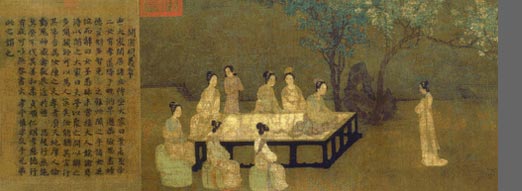| | |
Pottery may be the oldest artwork of human beings. As early as 8,000 years ago, in the Neolithic Age, earthenware, primitive pottery, were invented and produced along the Yellow River and the Yangtze River, this has been proved true due to archeological findings. There were front-page discoveries.
At the early stage of the Neolithic Age, pot had to be made by hands. Clay was coiled into ropes and then carefully smoothed using a paddle on the exterior pressed against an anvil on the inside wall. As time passed, the technique became more and more consummate. Different kinds of pottery appeared in different times and regions. Later till the primitive Yangshao Culture period, potter wheel was invented, and kiln was bettered, the production of pottery made a leap. The representative pottery then was red earthenware decorated with black animal and geometric designs. During the Longshan Culture period, end of the Neolithic Age, fast wheel was used and antique pottery reached a record height, represented by the white pottery and eggshell-thin black pottery.
Antique pottery continued to develop in the successive dynasties. During the Zhou Dynasty, pottery wares gained variety of designs and decorations. And faience appeared. Until the Qin Dynasty, pottery industry stepped into a new era. The world famous Qin Terra-cotta Warriors and Horses excavated in Xian, Shaanxi, astonished archaeologists for the marvelous techniques. From the Warring States Period through the Han Dynasty, the art and culture of pottery thrived. In addition to creating everyday pieces, pottery beasts and warriors were created and buried with the grandees. During the Three Kingdoms Period (220 - 280), the forging technique of porcelain gradually replaced traditional pottery handiwork. Innovations and experimentations went on in later dynasties until in the Tang Dynasty thus another great leap forward was made. The tri-colored pottery appeared! The sharp colored pottery won world reputation. Since in the Tang Dynasty, people emphasized luxurious funeral, nice and delicate pottery wares were always served as grave goods which included pottery officials, dancers, warriors and animals.
During the Ming Dynasty, purple clay pottery blossomed. The famous unique pottery, seldom glazed, was and still is, specially produced in Yixing, Jiangsu, since there's no purple clay in other places. It is the favorites of many people in China. The pottery usually maintains artistic beauty and daily use.
Fahua pottery was also famous in the Ming Dynasty. The pottery, in the south of Shanxi province, was ovened at low temperature. Usually, human figures, pavilions, peonies, and birds were painted upon in peacock blue, green, purple and white.
Another choice pottery that won great reputation for hundreds of years is purple clay pottery. It is well-known for its mild color, condensed structure, high intensity and fine particles. As early as the Song Dynasty (960 - 1279), people found purple clay teapots to look much more graceful than those of other materials. In the Ming and Qing Dynasties, tea developed as a simple and tasteful art. People who liked drinking tea held firm to the belief that tea in the purple clay pot smelled balmier and could retain the original quality; these teapots transferred heat slower and were more endurable of heat; after long time's use, the teapot would not fade but become more lustrous. Modern people still delight in this classic fashion ideal.
 View More Chinese Antique Pottery View More Chinese Antique Pottery
|

